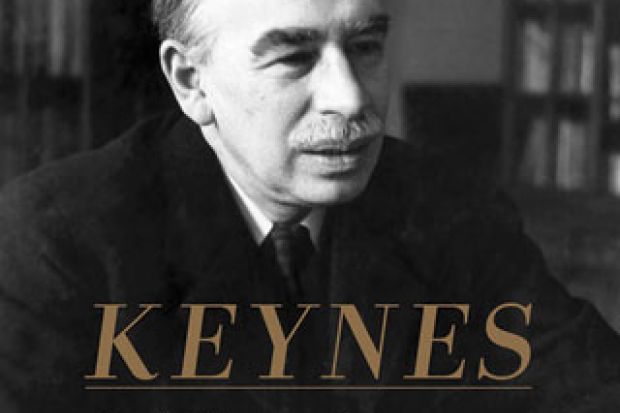With austerity such a focus of public attention of late, this new book on John Maynard Keynes is timely. Keynes’ insights in The General Theory of Employment, Interest and Money and elsewhere helped economists to understand why economies get stuck somewhere short of full employment, leaving resources of labour and capital under-utilitised and the economy operating well below its potential. Keynes focused on the ability of government spending to fill the gaps when private entrepreneurs, cowed by uncertainty and flagging confidence, are unwilling to build their businesses and employ labour. His ideas also form the foundation of a range of Keynesian-style theories, most recently and influentially “New Keynesian” macroeconomics. Free market economic theory argues that unemployed workers are unemployed because they want to be – they value their leisure too much. Keynesian theories focus on involuntary unemployment: workers may be willing and able to work at a given wage, but for a range of reasons – flagging aggregate demand is one of them – they cannot find a job. Keynes also explained why expansionary monetary policy – in its simplest form, printing money – is ineffective in severely depressed economies.
This book represents an attempt to explain some of this, while doing a great deal more. Is it economic history? Another Keynes biography? A history of economic thought? An economics primer? Peter Temin and David Vines claim it’s a primer, but the reader must wait until chapter four before any basic economic theory is introduced, and even then the account is confusing. Attempting to explain macroeconomics (and some microeconomics) in such a short book is a bold endeavour. Key insights are skimmed over: Keynes’ liquidity trap is not, as the authors claim, about zero interest rates. It’s about how expansionary monetary policy is subverted with extreme pessimism: money is printed but people hoard it, hiding cash under their beds. Consequently, monetary expansions have no impact on interest rates in severely depressed economies. Dismissive remarks about quantitative easing skip over the fact that quantitative easing is as much about boosting bank lending as it is about lowering interest rates.
Diagrams are misleadingly simplified – linear representations of supply and demand lead into a confusing discussion of negative prices and people’s willingness (not) to pay for rubbish. The authors cover IS-LM – a model of simultaneous balance in goods markets and money markets. IS-LM is an esoteric model, not particularly modern and largely attributable to John Hicks, not Keynes, and there is no room to explain it fully and clearly. Much better is their analysis of Trevor Swan’s model of internal and external balance. But overall this book doesn’t succeed as an economics primer – complex models that can easily fill textbooks of 1,000 pages or more are squeezed into just over 100, alongside a lot else. So it’s perhaps no surprise that they haven’t the space to say much about Keynes’ seminal contributions to our understanding of financial market psychology.
More interesting and successful is their historical analysis of Keynes’ ideas, including his profound insights from The Economic Consequences of the Peace about the likely consequences of the Treaty of Versailles; Keynes’ inputs to the Macmillan Committee formed after the 1929 crash; and the role played by Keynes’ Circus, a group of students and acolytes, in formalising his ideas. Another strong theme is Keynes’ contribution to international economics. Although he is famous for analysing a closed economy, he had a profound influence on our understanding of the international economy as well. He also played a crucial role in designing the Bretton Woods institutions. These historical insights are this book’s most notable contributions – a clear, short historical perspective on Keynes’ wider and enduring contributions, which are often skipped over in economics textbooks.
Keynes: Useful Economics for the World Economy
By Peter Temin and David Vines
MIT Press, 136pp, £17.95
ISBN 9780262028318 and 2321938
Published 14 November 2014
Register to continue
Why register?
- Registration is free and only takes a moment
- Once registered, you can read 3 articles a month
- Sign up for our newsletter
Subscribe
Or subscribe for unlimited access to:
- Unlimited access to news, views, insights & reviews
- Digital editions
- Digital access to THE’s university and college rankings analysis
Already registered or a current subscriber? Login





